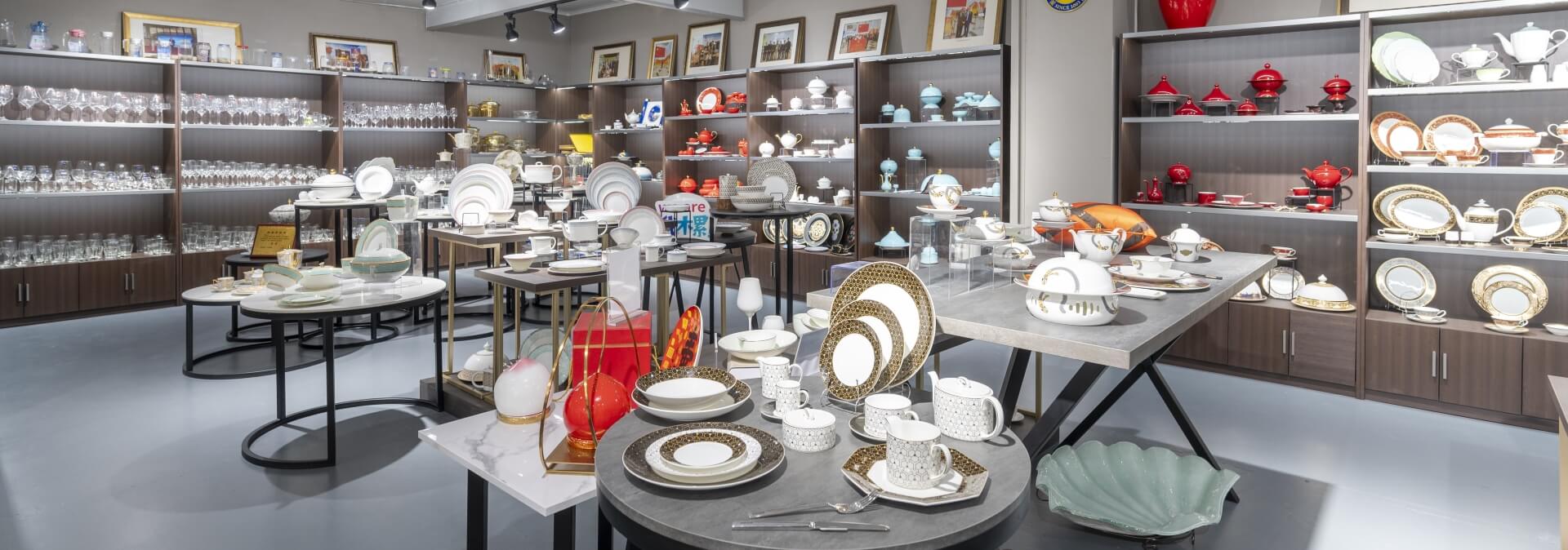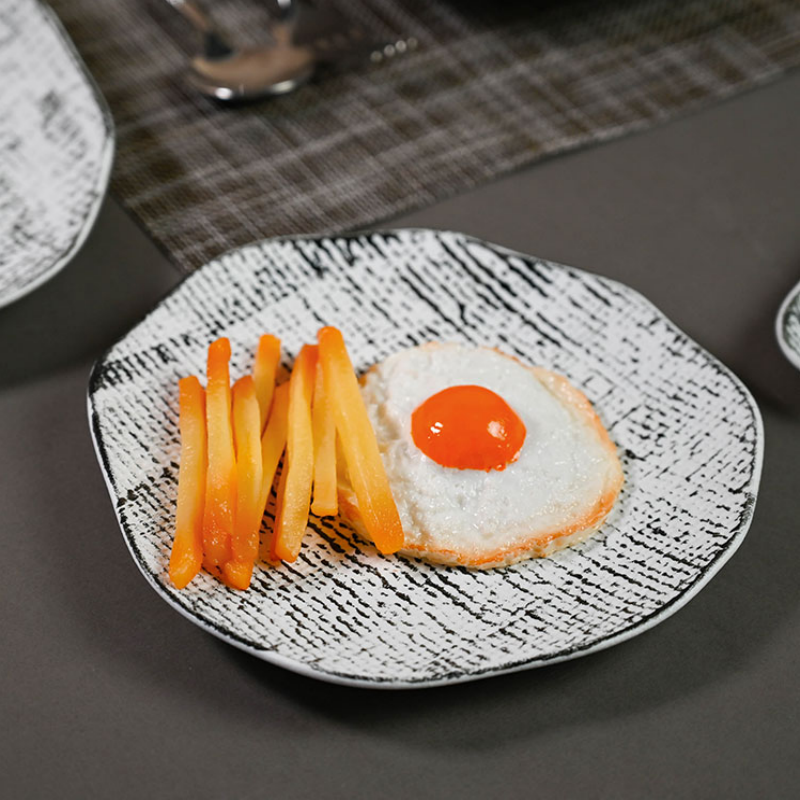
Article
Unveiling Artistry: World of Ceramic Crockery Manufacturing
Ceramic crockery holds a special place in the hearts and homes of people worldwide. From morning coffee mugs to elegant dinner plates, ceramic crockery serves both functional and aesthetic purposes, enriching everyday experiences. Its cultural significance spans centuries, with traditions and craftsmanship passed down through generations. In this blog, we delve into the fascinating world of ceramic crockery manufacturing, exploring the materials, processes, and artistry behind these beloved household items.
Section 1: Understanding Ceramic Materials
A. Types of Ceramic Materials
Ceramic crockery manufacturers like P&T utilize various types of ceramic materials, each with unique characteristics. Earthenware, stoneware, and porcelain are among the most common. Earthenware is porous and often glazed for waterproofing, making it ideal for colorful, decorative pieces. Stoneware is durable and versatile, suitable for everyday use due to its chip-resistant nature. Porcelain, known for its delicate appearance and strength, is often used for fine dining sets and decorative pieces.
B. Properties and Suitability
Each type of ceramic material possesses distinct properties that influence its suitability for different types of crockery. Earthenware, with its lower firing temperature, offers vibrant colors but is less durable than stoneware or porcelain. Stoneware, fired at higher temperatures, is more robust and suitable for both casual and formal dining. Porcelain, fired at the highest temperatures, boasts exceptional strength and translucency, making it perfect for elegant tableware.
Section 2: The Manufacturing Process
A. Raw Material Preparation
At P&T, the journey of ceramic crockery begins with the careful sourcing and preparation of raw materials. Clay, silica, and various additives are meticulously selected to achieve desired properties such as color, texture, and durability. The composition of clay, in particular, plays a crucial role in determining the final product’s characteristics, from its plasticity to its firing temperature.
B. Forming
P&T employs several methods of forming ceramic crockery, each with its own intricacies. Whether it’s the traditional art of throwing on a potter’s wheel, the precision of casting in molds, or the efficiency of jiggering, skilled artisans bring life to clay, shaping it into bowls, plates, cups, and more. Each forming process requires expertise and attention to detail to ensure consistency and quality in the finished pieces.
C. Decoration and Glazing
Once formed, ceramic crockery undergoes embellishment through various decoration techniques. From hand-painting intricate designs to applying stamps or decals, artisans at P&T infuse personality and charm into each piece. The glazing process follows, adding not only visual appeal but also functional benefits such as waterproofing and resistance to scratches and stains.
D. Firing
The final stage of the manufacturing process is firing, where ceramic crockery is subjected to intense heat in kilns. P&T utilizes different kiln types and firing cycles to achieve desired outcomes, whether it’s enhancing strength, achieving specific colors, or developing unique textures. Firing transforms raw clay into durable, beautiful crockery, ready to grace dining tables and kitchen shelves around the world.
Section 3: Quality Control and Assurance
A. Importance of Quality Control
Quality control is paramount in ceramic crockery manufacturing to ensure that products meet high standards of durability, safety, and aesthetics. At P&T, rigorous quality control measures are implemented at every stage of the manufacturing process to uphold excellence and customer satisfaction. By maintaining strict quality standards, P&T ensures that their ceramic crockery is of the highest caliber, meeting or exceeding expectations.

B. Common Quality Checks
Throughout the manufacturing process, various quality checks are conducted to monitor and maintain product quality. Inspection of raw materials, such as clay and glaze ingredients, ensures that only materials of the highest quality are used. Additionally, during bisque firing, the first firing stage, examination of the ceramic pieces ensures proper shaping, and any defects are identified and addressed before proceeding. Finally, a thorough inspection of the final products is conducted to guarantee that each piece meets P&T’s stringent quality standards before it reaches the hands of consumers.
Section 4: Sustainability in Ceramic Crockery Manufacturing
A. Exploring Sustainable Practices
P&T is committed to sustainability in ceramic crockery manufacturing, recognizing the importance of minimizing environmental impact. One key sustainable practice is the recycling of clay scraps and waste materials generated during production. By recycling clay, P&T reduces waste and conserves natural resources, contributing to a more sustainable manufacturing process. Additionally, P&T invests in energy-efficient kilns to reduce energy consumption and lower carbon emissions, further minimizing its environmental footprint.
B. Importance of Sustainability
In today’s environmentally conscious world, sustainability is increasingly becoming a priority for consumers. Modern manufacturing practices that prioritize sustainability resonate with environmentally conscious consumers who seek eco-friendly alternatives. By embracing sustainable practices, P&T not only reduces their environmental impact but also appeals to consumers who value sustainability, strengthening its brand reputation and market competitiveness.
Section 5: Trends and Innovations
A. Current Trends and Innovations
Innovations in ceramic crockery manufacturing continue to shape the industry, offering new possibilities for design, functionality, and sustainability. One notable trend is the adoption of digital printing technology, allowing for intricate designs and customization options that were previously impossible. P&T embraces this technology to create bespoke ceramic crockery that reflects individual preferences and styles.
B. Sustainable Materials and Designs
Another trend gaining traction in the ceramic crockery industry is the use of sustainable materials and eco-friendly production methods. P&T explores alternative materials such as recycled clay and glazes free from harmful chemicals, offering consumers environmentally friendly options without compromising on quality or aesthetics. Additionally, innovative designs and shapes that maximize functionality and minimize waste are becoming increasingly popular among consumers seeking sustainable alternatives.
Conclusion
Ceramic crockery manufacturing is a blend of tradition, craftsmanship, and innovation, resulting in timeless pieces that enrich our daily lives. From the selection of materials to the firing of the kiln, every step in the process reflects dedication to quality and artistry. At P&T, the passion for ceramic crockery shines through in every carefully crafted piece, inviting us to savor moments shared with loved ones around the table.
In the realm of ceramic crockery, manufacturers like P&T continue to honor traditions while embracing modern techniques, ensuring that these cherished household items endure for generations to come.
LET'S TALK TOGETHER
Lorem ipsum dolor sit amet, consectetur estor adipi isicing elit, sed do eiusmod tempor este uterre incididui unt ut

